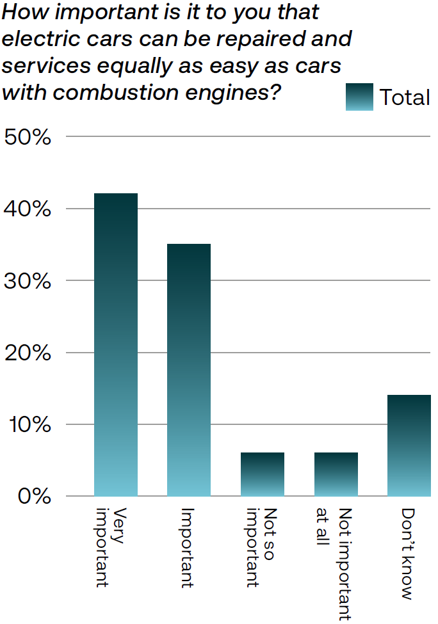For many electric vehicles, there is no way to repair or assess even slightly damaged battery packs after accidents, reports Reuters. It has forced insurance companies to write off cars with few miles – leading to higher premiums, undercutting gains from going electric and articulating an expensive gap in what was supposed to be a circular economy.
Tesla’s approach to integrating battery packs into the car body lowers production costs but pushes potential expenditures back onto customers and insurers. The risk of an electric car turning into a valueless asset within 5-8 years and the electric transition losing momentum have intensified the urgency of assuring serviceability and repairability of these vehicles.
Shift gained momentum with Tesla
Since joining MEKO in 2007, Magnus Sikström has witnessed the industry's vigorous shift towards electrification. The initial uptick, driven by hardcore enthusiasts in the 1990s, gained momentum with Tesla’s influence and was further accelerated by the recent influx of new manufacturers — indicating that this is far from a passing fad.
Having seen the first electric vehicles come to market inte the late 1990s, which drew the interest of a few enthusiasts, the rise of Tesla in the past decade made electric mainstream, he says. With the emergence of hundreds of new manufacturers in recent years, it certainly seems electric cars are here to stay.
What car owners should consider
The shift brings new demands for vehicle technicians, requiring retraining to prevent costly and potentially fatal mistakes. MEKO, through its subsidiary ProMeister, has responded with a range of training programs focused on competency and safety. Given that the battery is the heart and soul of an electric car, ProMeister also trains technicians on how to safely swap batteries.
“This is key to ensure they have the right skills and knowledge so they can have informed conversations with car owners. These required skills are different but not necessarily harder,” says Sikström. Another key aspect to consider, Magnus adds, is ensuring the battery is serviceable. If not, this could lead to high costs and minimal sustainability returns over the car’s lifecycle.
Look for serviceable batteries
Although he has not faced many issues himself, Magnus acknowledges reports of cars from well-known manufacturers with batteries that are glued together and thus not serviceable.
“The fact that this is even a topic of debate is surprising and problematic," Magnus explains. "The industry, which portrays itself as a champion of sustainability, really shoots itself in the foot if this isn't addressed soon. However, I believe this issue is still relatively rare.”
Right now, the jury is still out in many countries. Most electric car owners have had their vehicles for only a few years. As a result, few have reached the point where their battery needs to be replaced, or have been forced to buy a new car after just 5-8 years.
Learnings from Norway
In Norway, where electric cars have been around longer, there are valuable lessons to be learned. One key takeaway is that an effective market exists where independent repair shops offer battery repairs. In other words, it’s possible to avoid replacing the entire battery — saving significant costs and allowing drivers to keep their vehicles on the road. This ability to repair batteries also helps maintain the car’s resale value.
The need for industry-wide customer protection
Magnus Sikström advises prospective owners to be cautious when choosing brands, especially newer ones, due to the risk of losing aftermarket support if the company goes bankrupt.
Highlighting the need to protect customers, Magnus Sikström supports the EU's Right to Repair Act. This legislation aims to make it easier and more affordable for consumers to repair electronic devices by ensuring spare parts, repair manuals, and software updates are available to independent repairers and consumers for a set period after purchase. The goal is to reduce electronic waste, promote sustainability, and extend product lifespans.
Sikström believes that including the aftermarket under such directives would strengthen the industry’s credibility and further promote sustainability.
The critical importance of the right competence
Electric cars seemingly represent the future of eco-friendly transportation, but their long-term sustainability depends on the auto aftermarket industry's ability to provide affordable servicing and repair options. MEKO is working to ensure that going electric is both a smart and sustainable choice by improving technician skills and strengthening consumer protections. In 2024, MEKO reached a significant milestone, with over 1,000 workshops now equipped to handle the advanced high-voltage technology in electric cars.
Norway's experience shows that it's still possible for drivers to get their cars repaired without breaking the bank. However, it's important to carefully consider your choice of car.







